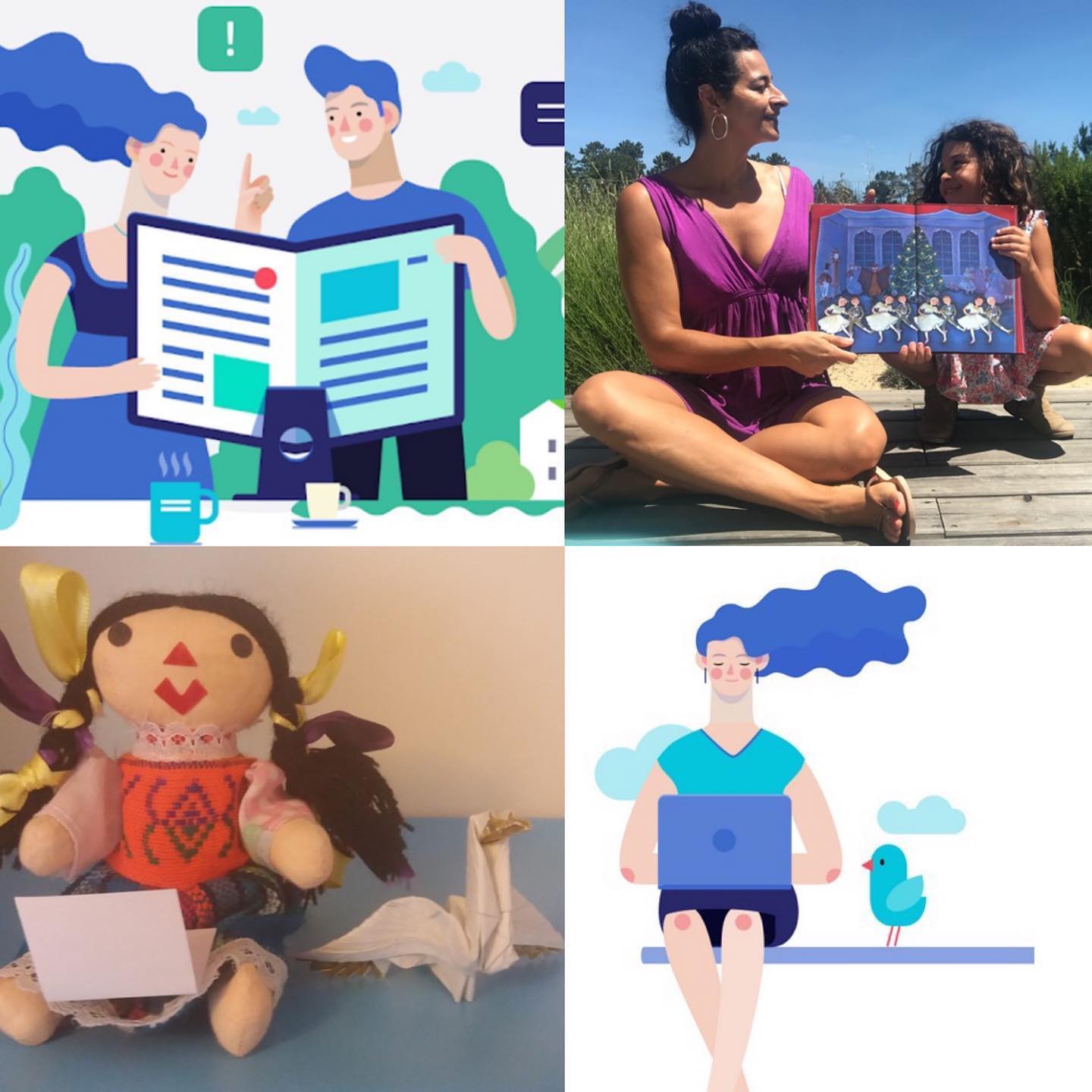
With twenty-four hours notice, Feedzai transitioned into a 100% remote company. This post focuses on how we did it, lessons learned, and tips for making remote work successful.
On March 11, 2020, Feedzaians across the globe commuted to our offices. We attended meetings in brightly carpeted conference rooms, joked with co-workers over lunch, and worked together side-by-side in our open office floor plan. Less than twenty-four hours later, everything changed. Feedzai’s team of 500+ employees all began working from home.
Three months into this experience, employee productivity and engagement has actually increased.
Here’s how we made (and continue to make) that happen, and how you can make it happen too.
Start with a strong company culture
While the pandemic plunged us — and the whole world — into unchartered territory, we attribute Feedzai’s smooth adjustment to the ‘new norm’ to our powerful compass: our five core fundamentals. They are:
- Grit: We push through with persistence and perseverance
- Raise the bar: We challenge ourselves to improve and push to exceed our goals continuously.
- Ownership: We take accountability for the outcomes of our work.
- Win together, lose together: We believe that success comes through working together as a team.
- Think globally: We are aware that the decisions and actions in our day-to-day work impact others.
Without these principles guiding the culture at Feedzai, navigating difficult and uncertain times like these would be akin to sailing while wearing a blindfold.
And this leads us to our first recommendation: If you don’t yet have a robust corporate culture, it’s time to develop one.
Here are some tips for creating a strong corporate culture:
Start with your values.
The foundation for a company’s culture is its values. If you don’t have articulated corporate values, develop them. Write your values down and share them in engaging ways such as employee recognition awards based on your core values or contests, encouraging employees to find creative ways to express the core values.

Develop employer branding.
Pay employer branding the same attention you pay to corporate branding. This goes a long way in hiring and retaining the most coveted employees.
Listen.
Ask employees for feedback via surveys, anonymous comment boxes, or any other way you can. Listen to the feedback you receive and take action. This point can’t be stressed enough.
Add in the right tech stack
Before the Coronavirus pandemic, Feedzai was a remote-friendly company. We’ve always had a small number of remote employees, and many employees enjoyed working remotely one or two days a week. This means we already had a reliable and robust VPN along with security-approved, cloud-based applications.
Additionally, Feedzai decided to become a 100% remote company before governments required that action. Being proactive gave us the time to test our tools and ensure our employees and customers would be well supported.
Here are some tips for building the right tech stack for a remote company:
Keep remote workers secure online.
We work closely with our security team before purchasing any technology. They do a thorough investigation into each tool we use and exactly how we’ll use it before we get approval to move forward. Occasionally, this means that we won’t have access to every feature. We rely on our security team to know which features create unacceptable security risks and to disable those as needed.
Conduct a tech audit.
At Feedzai, we undergo an annual tech audit to ensure that the tools we purchased yesterday are the tools we need tomorrow. This practice of continuously reviewing our tech stack creates operational efficiency and also positioned us to make the quick shift remote work.
Select flexible technology.
Choose tools that can adapt to changing goals and roles. It’s also important to choose tools that support different work styles.
Focus on your people
As a global company, our People Team has always had to understand and anticipate the needs of different cultures. However, responding to COVID-19 required much more than that. Worry over the pandemic, along with social distancing, placed an unrivaled burden upon everyone.
Some employees live alone and have had to endure months of isolation. Others have small children at home who can make productivity challenging. others have had to care for elderly parents while some have easy home situations but struggle with poor Internet connections.
Considering all these factors, we realized we needed to achieve three main goals: support Feedzaians, keep us connected, and help everyone stay healthy.
Here are some tips for focusing on your people at a remote company:
Increase communication.
We quickly realized that there was a healthy appetite for information and communication. To help satisfy this, we shifted our quarterly all-hands meetings to a monthly schedule. We also developed a well-being survey to actively listen to our people and understand how they are adjusting to full-time remote work, the anxiety brought on the pandemic, and how they’re balancing family and workplace responsibilities. Further, the People Team had one-on-one check-ins with every employee. This practice allowed us to identify employees who might need additional support. Increasing communication has been an invaluable experience for everyone.
Focus on health and wellness.
We launched several wellness initiatives, including Wellness Week — a seven-day event that brought in experts in mindfulness, diet and nutrition, exercise, and financial well-being. We also offered an eight-week mindfulness training course and have increased the number of free psychological visits employees can receive from our employee assistance program (EAP). Lastly, we’ve instituted two additional paid days off, which we call COVID days, to be used in June and July.
Adapt to the new normal.
Well before the pandemic, we had already allowed for some flexibility with schedules. COVID put that to the test, particularly with the realities of homeschooling. We realized this situation would naturally stress Feedzaians. Who wants to tell their boss they suddenly can’t work in the mornings? Leaders across the organization helped everyone adapt to the new reality by sharing their own experiences. In this way, they demonstrated to the teams that working unconventional hours and taking advantage of the flexibility that Feedzai provided was the right thing to do. In the end, we found that flexibility optimizes productivity and reduces stress.
Another way we adapted was to encourage employees to take office equipment home — from chairs to screens, to docking stations, to whiteboards — so that their home offices could be well-appointed, their motivation high, and their productivity optimized.
Iterate into the growth phase
As governments around the world begin to open back up, we have some decisions to make. Working remotely created challenges, but also opened up new possibilities. As we consider what the future of Feedzai’s offices will be like, we’ll once again rely on our core values to help us find the best way forward.
Here’s some insight on how we’re approaching the end of lockdown:
Start with your people.
First, we are checking to see who is comfortable returning to work. Some are eager to return to the office, but others are not. They are scared, don’t want to wear masks all day, or aren’t able to work in shifts. Others live with individuals in high-risk groups or aren’t comfortable on public transit, which is their only way to get to work.
Research, research, research.
The People Team might qualify for a Ph.D. in organizational response to pandemics before this is over. We’re conducting exhaustive research on how to keep people safe. There are many things to consider; deliveries, high-touch items, even going to the building’s washrooms. We must consider every interaction.
Be the tortoise, not the hare.
We’re taking a page from Aesop; the objective isn’t to speed, it’s to succeed. We have an opportunity to learn from other companies who choose to return to the office sooner rather than later. In this way, we can gather useful information on what works, what doesn’t, and how best to keep everyone safe.
Share this article:
Related Posts
0 Comments11 Minutes
#MyAI: Customer Choice and Consent in the Generative AI Age
From chatbots to call centers to loan applications and beyond, artificial intelligence…
0 Comments11 Minutes
Feedzai Fraud Frontlines: Cloud Migration Done Right
We’re on a mission to help banks and financial institutions shield their customers from…
0 Comments6 Minutes
How Feedzai Supports Mental Health / Menstruation at Work
At Feedzai, we have a reputation for being risk-takers and innovators. In our product, in…



